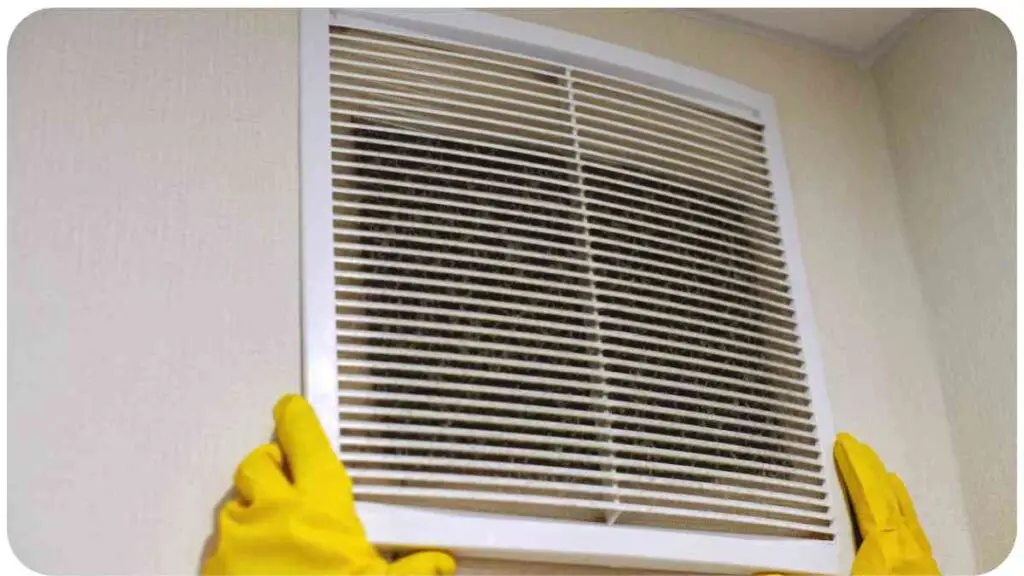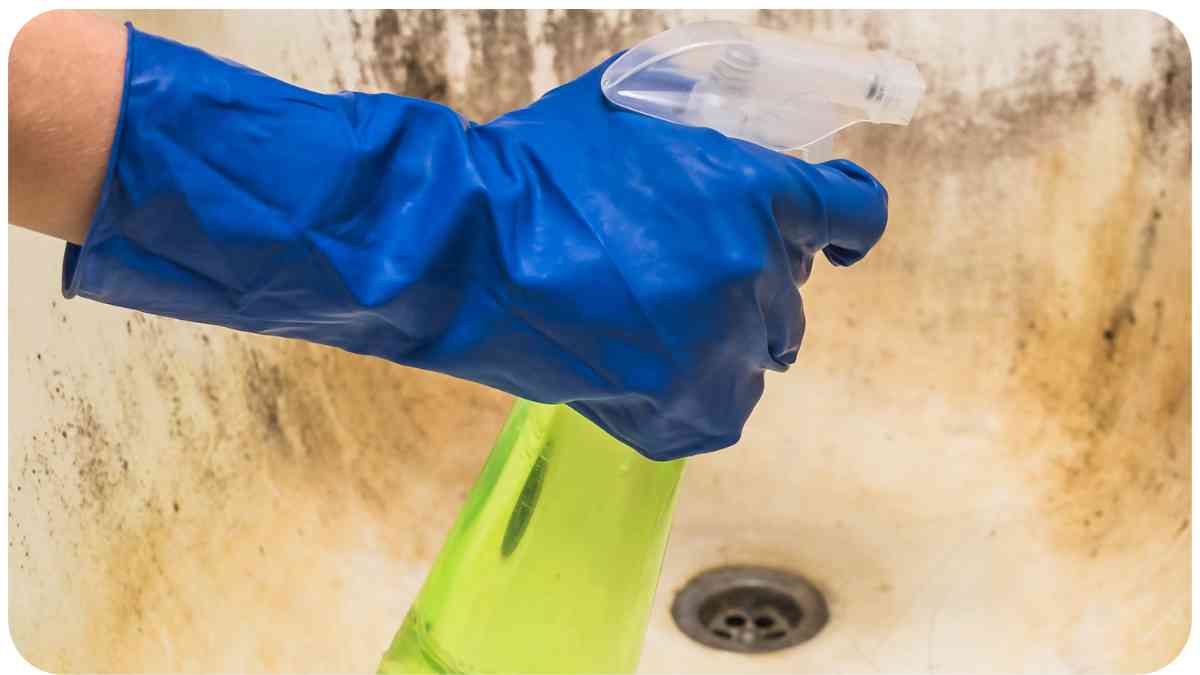Bathroom mould can be a persistent and unsightly problem that affects many households. Not only does it mar the appearance of our bathrooms, but it can also lead to health issues and damage to our homes. Preventing bathroom mould is essential to maintaining a clean, healthy, and pleasant environment.
In this article, we will explore various techniques and measures to help you keep your bathroom mould-free.
| Takeaways |
|---|
| Proper ventilation is crucial for preventing bathroom mould. |
| Controlling humidity levels by using exhaust fans, opening windows, and running a dehumidifier helps inhibit mould growth. |
| Regular cleaning, including wiping down surfaces and cleaning bathroom fixtures, prevents mould buildup. |
| Using mould-resistant materials in bathroom renovations can help deter mould growth. |
| Promptly addressing and fixing any leaks or water infiltration is essential for preventing mould. |
| Taking preventive measures, such as proper caulking maintenance and drying wet surfaces, reduces the risk of mould formation. |
| If mould is already present, identifying the source of moisture, cleaning with mould-killing products, and preventing future outbreaks are crucial steps. |
Understanding the Causes of Bathroom Mould
Before diving into preventive measures, it’s important to understand what causes bathroom mould in the first place. Mould thrives in environments that are damp, warm, and poorly ventilated. Bathrooms, with their frequent use of water and limited air circulation, provide the perfect breeding ground for mould growth. Common factors that contribute to mould formation include:
- High humidity levels
- Insufficient ventilation
- Water leaks or seepage
- Lack of natural light
- Porous surfaces that retain moisture
Now that we’re familiar with the primary triggers, let’s explore how proper ventilation plays a vital role in preventing bathroom mould.
Building a support system after experiencing grief and loss can be difficult, but finding strength in the community can make a big difference. Check out our guide on building a support system after a loss to learn more about the benefits of the community during times of grief.
The Role of Ventilation in Mould Prevention

Effective bathroom ventilation is crucial for preventing mould. It helps to remove excess moisture, control humidity levels, and promote proper air circulation. Without adequate ventilation, dampness lingers, leading to the growth of mould and mildew. By improving ventilation, we can create an environment that discourages mould formation.
There are various types of bathroom ventilation systems available, each with its own features and benefits. Let’s take a closer look at some of them.
Types of Bathroom Ventilation Systems
In our quest for effective mould prevention, we have several options when it comes to bathroom ventilation systems. Here’s a comparison table outlining the features of different systems:
| Ventilation System | Advantages | Disadvantages |
| Exhaust Fans | – Efficient at removing steam and humidity<br>- Cost-effective | – Requires electrical setup and wiring<br>- May be noisy |
| Window Ventilation | – Allows for natural air circulation<br>- No installation cost | – Limited control over airflow<br>- Security and privacy concerns |
| Heat Recovery Ventilators (HRVs) | – Provides fresh air while retaining heat<br>- Reduces humidity levels | – Higher installation cost<br>- Requires professional installation |
| Ventilation and Light Fixtures | – Integrates lighting and ventilation<br>- Saves space | – Costlier than standalone options<br>- May require professional installation |
As different homes have varying needs and configurations, it’s important to choose a ventilation system that suits your requirements and budget. Now that we understand the options available, let’s explore some tried-and-tested tips for proper bathroom ventilation.
Managing plumbing issues in your basement can help prevent leaks and water damage. Learn some DIY tips for basement washing machine drain plumbing to keep your bathroom and surrounding areas dry and mold-free.
Tips for Proper Bathroom Ventilation
Proper ventilation in the bathroom is key to preventing mould growth. Here are some essential tips to keep in mind:
- Use an exhaust fan: Install and use an exhaust fan in your bathroom to expel excess moisture. Turn it on during and after bathing or showering to remove steam and humidity from the air.
- Keep the bathroom door open: Leaving the bathroom door open allows for better air circulation. This can help prevent moisture buildup and reduce the chances of mould formation.
- Open windows: If you don’t have an exhaust fan or prefer a more natural approach, opening windows can help exchange stale air with fresh air, improving ventilation.
- Run a dehumidifier: A dehumidifier in the bathroom can be effective in reducing humidity levels. Run it periodically to extract moisture from the air, preventing dampness and mould growth.
These tips are just the beginning. By implementing them consistently, you can significantly minimize the risk of bathroom mould. Now, let’s explore another important aspect of mould prevention: reducing humidity levels.
Reducing Humidity Levels in the Bathroom

High humidity is one of the main culprits behind mould growth. To prevent excessive moisture buildup in your bathroom, consider the following effective methods:
- Ventilate and circulate: In addition to using an exhaust fan or opening windows, make sure to circulate the air in your bathroom regularly. Use a portable fan or even a ceiling fan to help move the air around and promote drying.
- Use a shower curtain liner: Invest in a high-quality shower curtain liner to prevent water from splashing outside the shower area. This will help contain moisture and reduce humidity levels.
- Fix leaks promptly: Any leaks in your bathroom, whether from the faucet, showerhead, or pipes, should be fixed promptly. Even small leaks can contribute to increased humidity and provide a breeding ground for mould.
- Dry wet surfaces: After taking a shower or bath, ensure that you dry the surfaces, including the bathtub, tiles, and shower curtain, as much as possible. Use a squeegee or towel to remove excess moisture, preventing it from lingering and promoting mould growth.
By following these methods, you can significantly reduce humidity levels in your bathroom, mitigating the risk of mould formation. Now, let’s delve into the importance of regular cleaning and maintenance.
Preventing basement leaks and maintaining sewer pipes are essential for any homeowner. Explore useful tips for sewer pipe maintenance to effectively protect your bathroom and entire household from potential water damage.
Regular Cleaning and Maintenance
Besides ventilation and humidity control, regular cleaning and maintenance play a crucial role in preventing bathroom mould. Here are some tips to keep your bathroom clean and mould-free:
- Clean surfaces regularly: Wipe down surfaces, such as countertops, tiles, and sink, with a mild cleaner or a mixture of vinegar and water. Regular cleaning helps remove any mould spores and prevents their accumulation.
- Clean bathroom fixtures: Faucets, showerheads, and drains are places where moisture can accumulate and mould can grow. Regularly clean and disinfect these fixtures to prevent mould buildup.
- Use mould-resistant paint: Consider using mould-resistant paint on bathroom walls and ceilings. This specialized paint contains antimicrobial properties that help inhibit mould growth.
- Inspect and repair caulking: Inspect the caulking around your bathtub, shower, and sink regularly. If you notice any cracks or gaps, remove the old caulking and replace it to prevent water penetration and mould formation.
By incorporating these cleaning and maintenance practices into your routine, you can proactively prevent bathroom mould. However, there are additional steps you can take to enhance mould prevention further.
Additional Steps for Mould Prevention
In addition to proper ventilation, humidity control, and regular cleaning, here are a few extra steps you can take to maximize mould prevention:
- Use mould-resistant materials: When renovating or updating your bathroom, consider using materials that are resistant to mould, such as moisture-resistant drywall, mold-resistant grout, and tiles.
- Opt for natural light: If possible, allow natural light into your bathroom. Sunlight acts as a natural mould deterrent and can help dry out the space, preventing mould growth.
- Use a mildew-proof shower curtain: Invest in a shower curtain that is specifically designed to resist mildew and mould. These curtains are made from materials that discourage mould growth.
- Keep bathroom essentials dry: Ensure that items such as towels, bathmats, and sponges are adequately dried after each use. Don’t leave them in a damp pile, as this can create a breeding ground for mould.
By implementing these additional measures, you can fortify your efforts to prevent bathroom mould. However, if you’re already facing a stubborn mould problem, it’s essential to address it promptly.
If you notice black specks in your bathtub, it’s crucial to address the issue promptly. Discover how to effectively fix this problem with our informative guide on removing black specks in your bathtub and maintain a clean and hygienic bathroom.
Dealing with Existing Mould Issues
If you discover mould in your bathroom, it’s crucial to take action to remediate the problem. Here are some strategies to deal with existing mould:
- Identify and remove the source: Identify the source of excess moisture or water infiltration that is causing the mould. Fixing the underlying issue is crucial to prevent mould from recurring.
- Clean with mould-killing products: Use effective mould-cleaning products to remove the existing mould. Follow the instructions carefully, and ensure proper ventilation during and after the cleaning process.
- Consider professional help: For severe mould infestations, especially in hidden areas or large spaces, it may be best to seek professional assistance for remediation. They have the expertise and equipment to tackle the problem effectively.
- Prevent future outbreaks: Once the mould is removed, take proactive measures to prevent its recurrence. Implement the preventive measures discussed throughout this article to keep your bathroom mould-free.
By tackling existing mould issues head-on and implementing preventive measures, you can maintain a clean and mould-free bathroom. Now, let’s explore the benefits of preventing bathroom mould.
The Benefits of Preventing Bathroom Mould
Preventing bathroom mould offers numerous benefits for both your health and your home. Here are some key advantages:
- Healthier environment: Mould can release spores that cause respiratory issues, allergies, and other health problems. By preventing mould growth, you create a healthier living space for you and your family.
- **Preserve your home’s structural integrity**: Mould can weaken structures and surfaces over time, leading to damage that may require costly repairs. By preventing mould, you can preserve the integrity of your bathroom’s walls, ceilings, and fixtures.
- Improved air quality: Mould can contribute to poor indoor air quality, leading to musty odors and discomfort. By keeping mould at bay, you can enjoy fresher and cleaner air in your bathroom.
- Enhanced aesthetics: A mould-free bathroom looks clean, bright, and visually appealing. By preventing mould, you can maintain the aesthetics of your space and create a more pleasant environment.
- Peace of mind: Knowing that you have taken the necessary steps to prevent mould gives you peace of mind and eliminates the worry of dealing with mould-related issues.
By understanding the benefits of preventing bathroom mould, you can prioritize mould prevention and ensure a healthier and more enjoyable bathroom environment.
Water damage can cause significant issues, especially in shower areas. Learn how to prevent such damage and fix your shower’s drywall with our comprehensive guide on stopping water damage and fixing your shower’s drywall, ensuring a well-maintained and mould-free bathroom environment.
Conclusion
Preventing bathroom mould is essential for maintaining a clean and healthy living space. By implementing effective ventilation systems, controlling humidity levels, conducting regular cleaning and maintenance, and taking proactive steps, you can significantly reduce the risk of mould growth. Remember to choose the right ventilation system for your needs, keep surfaces dry, circulate the air, and address any existing mould issues promptly.
By doing so, you can enjoy the numerous benefits of a mould-free bathroom, including improved health, preserved home integrity, enhanced air quality, and increased peace of mind. With these preventive measures in place, you can create a bathroom that is not only functional but also beautiful and mould-free.
Further Reading
Here are some additional resources to delve deeper into preventing bathroom mould:
- Villeroy & Boch: Preventing Mould in the Bathroom – 9 Important Tips: Provides nine important tips for preventing mould in the bathroom, covering topics such as ventilation, cleaning, and maintenance.
- No Probs Plumbing: Stop Mould & Mildew Growth During Winter: Offers guidance on preventing mould and mildew growth specifically during the winter season. Provides insights into common causes of mould and practical tips for prevention.
- PlumbNation: What Causes Mould in the Bathroom and How to Prevent It: Explores the causes of bathroom mould and provides actionable advice on prevention. Discusses the role of ventilation, moisture control, and maintenance in keeping the bathroom mould-free.
FAQs
Here are some frequently asked questions about preventing bathroom mould:
Q: What role does ventilation play in preventing bathroom mould?
A: Proper ventilation helps to remove excess moisture from the bathroom, reducing dampness and inhibiting mould growth.
Q: How can I reduce humidity levels in my bathroom?
A: You can reduce humidity by using exhaust fans, opening windows, running a dehumidifier, and drying wet surfaces thoroughly.
Q: Which materials are best for preventing bathroom mould?
A: Using mould-resistant materials such as moisture-resistant drywall, mold-resistant grout, and tiles can help deter mould growth in the bathroom.
Q: How often should I clean my bathroom to prevent mould?
A: Regular cleaning is essential. Wipe down surfaces, clean bathroom fixtures, and ensure proper caulking maintenance to prevent mould buildup.
Q: What should I do if I already have mould in my bathroom?
A: If you discover mould, identify and fix the underlying cause of excess moisture. Clean the mould using mould-killing products and take preventive measures to avoid future outbreaks.
Note: Make sure to click on the respective titles to access the complete content of each resource.

Hellen James is the author of the blog and a licensed plumber with over 15 years of experience. She shares her knowledge and experience in plumbing and drainage through insightful and informative articles

